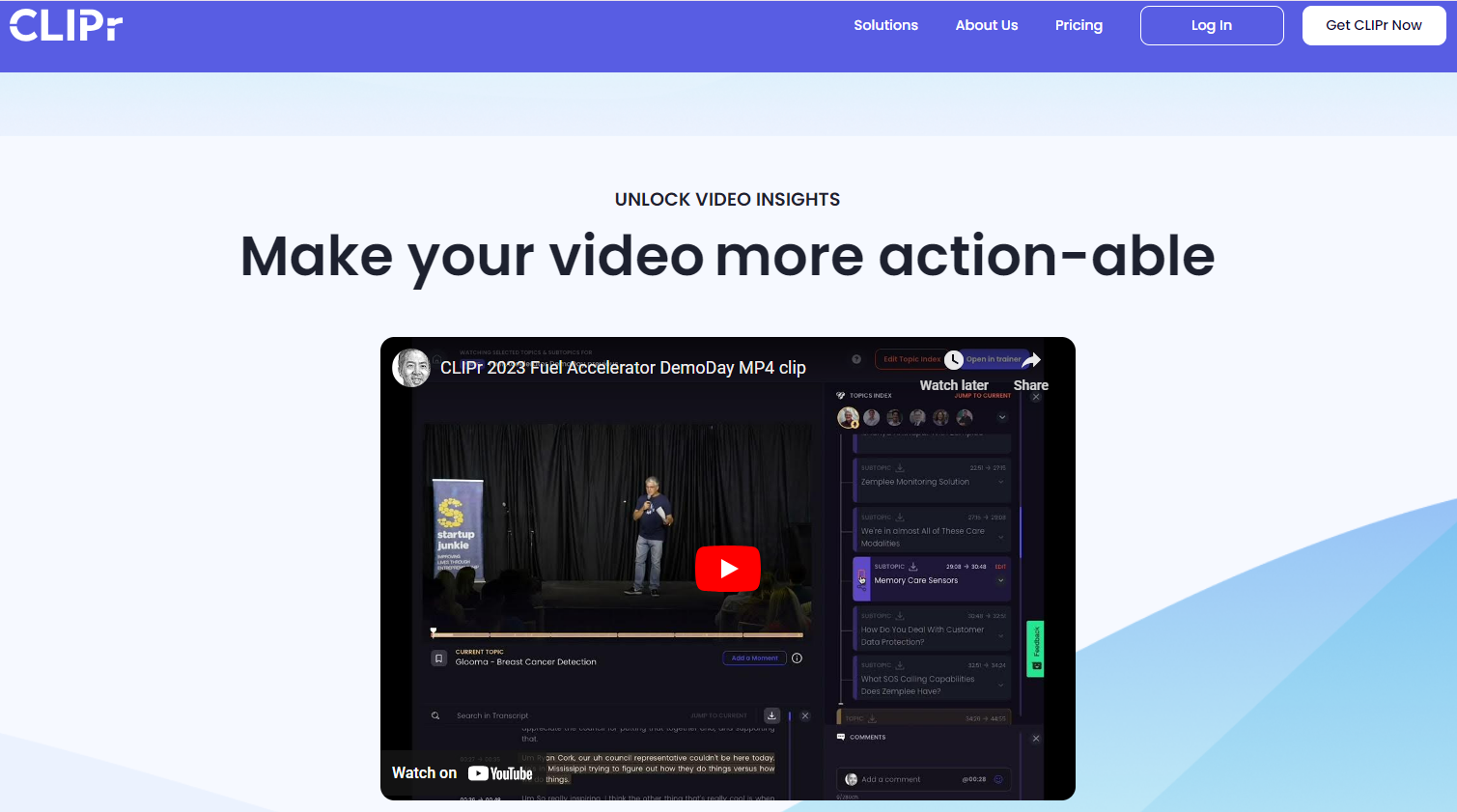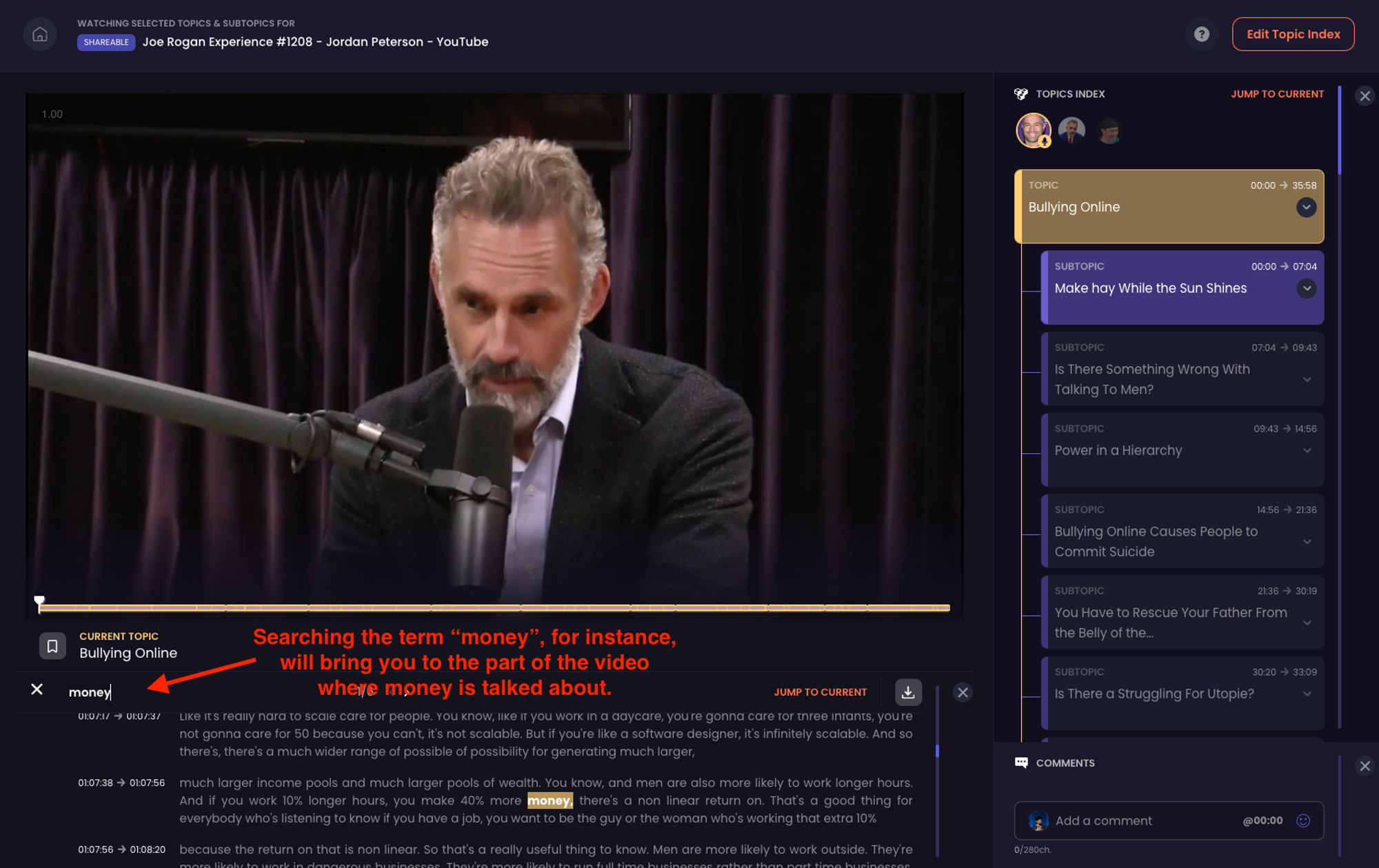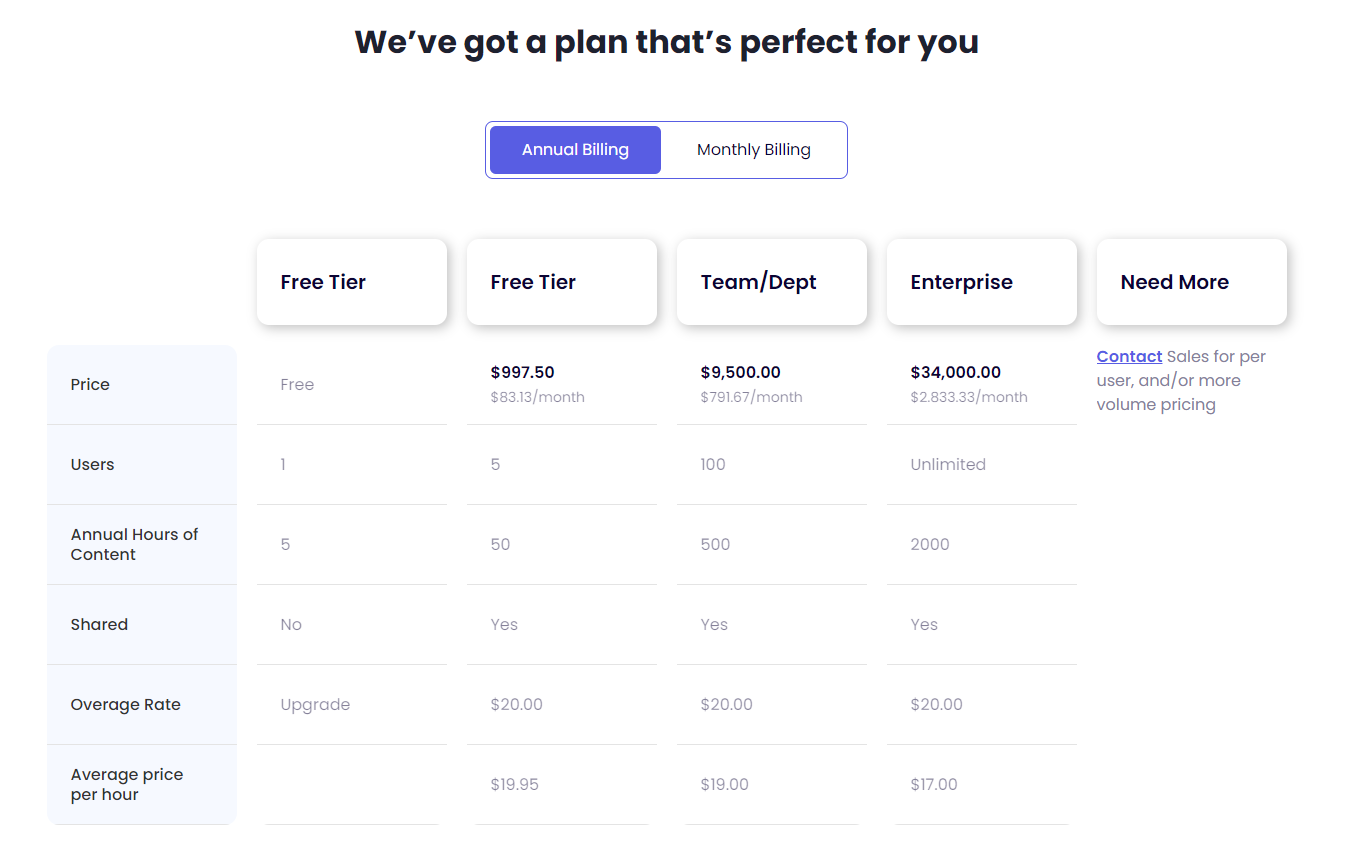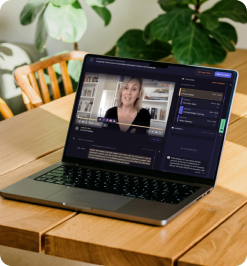
How to Start a Podcast With No Audience [Step-by-Step Guide]
Skyrocket from zero to fame! Start your podcast from the ground up with these expert tips.
Overview
According to DemandSage, there are over 100 million weekly podcast listeners in the US alone. Clearly, the podcasting industry is immensely popular and only growing. But here’s a twist — embarking on the podcasting journey with no pre-existing audience can still be challenging.
However, with the right strategy, dedication, and creativity, you can build a loyal audience and make your mark in this ever-evolving field. Wondering how to navigate this process? Don’t worry; we're here to guide you every step of the way.
In this article, we'll explore:
- Essential steps to start your podcast from scratch.
- Major challenges associated with creating a new podcast.
- Proven tips to make your podcasting journey a success.
- Inspiring success stories of podcasts that rose from no-initial audience to fame.
P.S. While you're navigating the podcasting journey, CLIPr can be a game-changer. This AI-powered platform analyzes and extracts key moments from your podcast episodes, allowing you to share them and increase your audience base. It’s like having an extra pair of hands to increase your podcast reach.
{{cta}}

Benefits of Starting a Podcast
Starting a podcast can be a rewarding venture, both personally and professionally. Here are some key benefits of starting a podcast:
- Personal Development: Running a podcast can significantly enhance your communication skills. It encourages you to stay current in your field, continually learn new things, and think critically about various topics.
- Monetization Potential: Successful podcasts can generate income through various other channels like sponsorships, advertising, affiliate marketing, and merchandise sales.
- Personal Growth: Creating a podcast encourages continuous learning and development as you research topics, interview experts, and engage with your audience.
- Easy and Cost-Effective: With minimal equipment and setup, podcasting is a relatively easy and cost-effective way to produce and distribute content.
How to Create a Podcast from Scratch? 7-Step Guide
Here’s a step-by-step guide for creating a podcast with no audience:
1. Define Your Target Audience
Before diving into podcasting, pinpoint your niche and understand who you're speaking to. This focus is crucial for crafting content that resonates and attracts a dedicated audience.
Here’s how to get started:
- Research Your Interest Area: Identify the podcast topic you are passionate about, and that has potential audience interest.
- Understand Your Audience: Determine who your target listeners are, their preferences, and what they seek in a podcast.
- Analyze Competition: Look at existing podcast content in your chosen niche. Understand what they do well and what gaps you could fill.
- Unique Selling Point (USP): Develop a USP that makes your podcast stand out. This could be a unique format, perspective, or approach.

Source: Freepik
2. Plan Your Content
A successful podcast relies on well-thought-out content that consistently delivers value to the podcast audience. To plan your content effectively, follow these tips:
- Episode Structure: Decide on the format – interviews, solo commentary, storytelling, or a mix.
- Content Calendar: Create a podcast content calendar to organize topics, guests, and release dates.
- Guest Planning: If your format includes guests, create a wish list and plan your outreach strategy.
- Engagement Strategies: Think of ways to engage your audience, such as Q&A sessions, listener shoutouts, or interactive segments.
Pro Tip: Listen to popular podcast episodes for inspiration on content structuring and engaging storytelling techniques.
3. Get the Right Equipment
Although you can record a podcast on an iPhone, the right equipment can significantly improve the quality of your podcast. Here’s what you’ll need at hand to get started:
- Microphone: Invest in a good quality microphone. It doesn't have to be expensive, but it should be clear and noise-cancelling.
- Headphones: Get a pair of comfortable, closed-back headphones for monitoring your audio while recording.
- Recording Software: Choose reliable recording and editing software. Options include Audacity, GarageBand, or Adobe Audition.
- Acoustic Treatment: Consider the acoustics of your recording space. Simple treatments like foam panels can significantly improve sound quality.

Source: Freepik
4. Set Up Your Recording Space
Create a dedicated space for recording to ensure consistency and quality in your podcast episodes. Here's how to set up your recording space effectively:
- Quiet Environment: Choose a space with minimal background noise. A quiet room with carpeting and soft furnishings can help.
- Comfortable Setting: Ensure your recording space is comfortable for long sessions, with good lighting and ergonomics.
- Equipment Setup: Arrange your equipment for easy access and efficient recording. Consider stands or mounts for your microphone and headphones.
- Personal Touch: Add elements that inspire you, such as artwork, plants, or motivational quotes, to make the space uniquely yours.
Pro Tip: Use a pop filter with your microphone to reduce plosive sounds for clearer audio quality.
5. Record Your First Episode
With your plan and space ready, it's time to record your first episode. For this, you may consider the following steps:
- Script Preparation: Write a script or outline to guide your episode. This keeps you focused and ensures you cover all intended points.
- Test Recording: Do a short test recording to check sound levels and equipment functionality.
- Actual Recording: Record your episode, keeping your tone conversational and engaging. Remember to speak clearly and at a steady pace.
- Editing: After recording, edit your episode to remove any mistakes, pauses, or unwanted noises.

Source: Freepik
6. Edit & Enhance Your Audio
Podcast editing is crucial to present a polished and professional podcast. During this phase, focus on:
- Audio Editing: Use your chosen software to trim content, adjust levels, and add effects if necessary. CLIPr's transcript search feature can help you find time-stamps for the most (or least) important parts of your recording so you know where to focus your edits.

- Music and Sound Effects: Consider adding intro and outro music or sound effects to enhance the listening experience.
- Consistency: Ensure each episode has a consistent sound and quality. This includes volume levels, music, and overall tone.
- Final Checks: Listen to the entire episode to catch any issues before publishing.
Pro Tip: Don't over-edit. Natural conversation flow is often more engaging than a heavily edited podcast.
7. Publish & Distribute Your Podcast
Once your episodes are ready, you’ll need to share them with the world. To do so effectively, follow these strategies:
- Social Media: Use social media platforms to share your podcast episodes and engage with your audience.
- Podcast Host Platform: Publish your podcast episode on a podcast hosting platform (Google Podcasts or Apple Podcasts).
- Podcast Website: Create a podcast website or blog for your podcast where you can post episode transcripts, additional content, and updates.
- Email Marketing: Build an email list to keep the podcast audience informed about new episodes and special content.
Pro Tip: Use SEO strategies in your podcast cover art, episode title, and show notes to attract your target audience.
You can also use CLIPr to analyze successful podcasts in your niche, efficiently collaborate with your team, promote your podcast through engaging clips, and understand your audience's preferences. CLIPr's video indexing can help you study key topics and strategies from top podcasts, allowing you to create more engaging and relevant content.
{{cta}}

5 Major Challenges of Starting a New Podcast
Starting a new podcast with no existing audience presents several significant challenges. Here are five major challenges you might face:
1. Building an Audience from Scratch
- Market Saturation: The podcast landscape is incredibly crowded, making it challenging for new podcasters to get noticed. Researching and understanding your competition and successful podcasters is essential.
- Differentiation: Identifying and emphasizing what makes your podcast unique is crucial. This could be your content, presentation style, or a particular niche you cater to.
- Lack of Immediate Feedback: In the beginning, without a significant audience, it can be difficult for new podcasters to receive constructive feedback. This lack of interaction requires you to be self-reliant in content assessment and improvement.
2. Consistent Content Creation
- Finding a Unique Voice: It's important to establish a unique idea, voice and style that's distinctively yours. This involves experimenting with content and presentation until you find what truly resonates with your intended audience.
- Regular Posting Schedule: Consistency in publishing episodes is key to building an audience. Balancing this with other life responsibilities can be challenging but is crucial for sustained growth.
- Avoiding Burnout: Regular content creation can be taxing. It's important to manage your workload to prevent burnout while ensuring the content quality remains high.

Source: Freepik
3. Technical Knowledge and Equipment
- Learning Curve: For newcomers, understanding the technicalities of podcasting, like audio recording and editing, can be daunting. It involves a significant investment of time to learn these skills.
- Equipment Investment: Initial investment in quality equipment (microphones, headphones, podcasting software) is essential but can be expensive. Balancing cost and quality is a key consideration.
- Professional Sound Quality: Achieving clear, professional audio is critical for audience retention. This often means learning sound engineering basics and investing in good equipment.
4. Marketing & Promotion
- Effective Social Media Use: Utilizing social media platforms and SEO effectively to promote your podcast can be complex. It requires learning effective marketing strategies and continuously adapting to platform changes.
- Building a Community: Fostering a sense of community among listeners is essential for growth. This involves engaging with your audience through multiple platforms and creating a space for them to interact.
- Promotion Challenges: Without an initial audience, promotional efforts can feel like a shot in the dark. Persistence and creativity in marketing are key to overcoming this hurdle.
5. Monetization & Sustaining the Podcast
- Revenue Generation: Attracting sponsors and advertisers is difficult without a significant audience. Exploring alternative revenue streams like merchandise, crowd-funding, or paid content can be essential.
- Financial Sustainability: Balancing the costs of running a podcast with slow initial growth is challenging. It's important to have a financial strategy in place.
- Time and Resource Investment: The substantial investment of time and resources in creating and maintaining a new podcast can be overwhelming, especially with slow returns at the beginning.

Source: Freepik
4 Golden Tips for Achieving Podcast Success
Starting a podcast with no audience can be a daunting challenge. But with the right strategies, you can build a dedicated listener base and achieve podcast success. Here are four unique tips to help you on your journey:
Leverage Niche Topics
- Deep Dive into Your Passion: Identify a subject you are passionate about or an area that hasn't been extensively covered in other podcasts. This specialization sets you apart.
- Expert Interviews and Discussions: Bring on guests who are experts in your niche to add credibility and depth to your podcast.
- Case Studies and Real-World Examples: Use specific examples to make your niche topic more relatable and engaging.
Interactive Content Creation
- Audience Participation Segments: Incorporate segments where listeners' questions or comments are featured and discussed.
- Live Streaming Episodes: Occasionally live stream your podcast recording sessions, allowing real-time interaction with your audience.
- Audience-Driven Episodes: Regularly have episodes fully driven by audience suggestions, enhancing their investment in your content.
Strategic Release Timing & Scheduling
- Analyzing Listener Habits: Use analytics tools to understand when your audience is most engaged and plan your release schedule around these times.
- Themed Series or Episodes: Create series or episodes that align with cultural events or holidays, attracting listeners looking for timely content.
- Consistency and Surprise Elements: While maintaining a regular schedule, occasionally surprise your audience with bonus episodes or unique content.
Localized Content for Global Audiences
- Cultural Adaptation and Relevance: Tailor your content to reflect the cultural nuances and current trends of different regions.
- Collaborations with Local Influencers: Partner with local influencers or podcasters to gain authenticity and deeper insights into the regional audience.
- Feedback and Local Engagement: Encourage feedback from different regional audiences to continuously adapt and refine your localized content.
Real-Life Examples of Successful Podcasts with No Initial Audience
1. BiggerPockets Real Estate Podcast
- Overview: The BiggerPockets Real Estate Podcast started with no listeners and has grown to become one of the most popular podcasts in the real estate industry. They achieved this success by consistently producing high-quality content that addresses their target audience's pain points and interests.
- Results: The podcast's strategy of producing exceptional content, coupled with effective networking, has garnered a significant following. This strategic approach propelled them to an impressive milestone of 25 million downloads.
2. FoundMyFitness
- Overview: The FoundMyFitness podcast began with no initial audience and has grown to become a trusted source of health and wellness information. Hosted by Dr. Rhonda Patrick, it delves into topics such as nutrition, fitness, and mental health, offering valuable insights to its listeners.
- Results: Through a commitment to evidence-based content and leveraging social media, the FoundMyFitness podcast attracted 495K dedicated listeners interested in improving their well-being.
3. ChooseFI Podcast
- Overview: The ChooseFI podcast began with no listeners and has become popular in the financial independence community. This podcast succeeded by creating content that addresses the pain points of its target audience, such as saving for retirement and managing debt.
- Result: By focusing on topics relevant to their niche and effectively promoting their podcast through various channels, ChooseFI attracted a dedicated audience of 36.7K subscribers interested in achieving financial independence.
Maximize Your New Podcast's Potential with CLIPr
To wrap up, starting a podcast with no audience is a journey that demands a blend of passion, patience, and strategic planning. By following the above-mentioned guide, you can navigate the initial challenges and build a foundation for success.
Key Takeaways:
- Identify your niche and stay authentic to your voice.
- Consistency is key: maintain a regular posting schedule.
- Engage with your podcast listeners through social media and listener feedback.
- Leverage guest appearances to expand your reach.
- Invest in decent equipment to ensure quality audio.
While on your podcasting journey, consider leveraging CLIPr. This AI-driven platform can help you index and analyze top successful podcasts, uncovering vital topics and tactics for creating content that engages the audience. Visit CLIPr now and see where it can take your new podcast project.
{{cta}}

Frequently Asked Questions - (FAQs)
How can I monetize my podcast as it grows?
For monetization of a podcast, consider diverse revenue streams such as sponsorships, advertising, listener donations, merchandise sales, and premium content. Engage with companies for product placements, set up a Patreon account for donations, and offer exclusive content or merchandise to loyal listeners.
How can I create a podcast format that will attract listeners?
To create a podcast format that attracts listeners focuses on unique content, a consistent release schedule, high-quality production, and engaging storytelling. Choose a niche subject to stand out, ensure audio clarity, and incorporate listener feedback to improve. Engaging interviews and interactive segments can also enhance listener interest.
What strategies can I use to market my podcast without an existing audience?
To market a podcast without an existing audience, leverage social media platforms, collaborate with other podcasters, and engage in community forums related to your podcast's theme. Utilize SEO strategies for podcast titles and descriptions, participate in podcast directories, and encourage word-of-mouth promotion by providing high-quality, shareable content.
Read Next
- 26 Podcast Best Practices for Beginners (Tips & Examples)
- Podcast Strategy Guide (Tips, Tools & Success Stories)
- How to Make Your Podcast Stand Out in 2024: 15 Proven Ways
CLIPr Your Next Viral Moment in Minutes
Tame video chaos with CLIPr: Navigate through AI-driven chapters, dive into searchable transcripts, and highlight pivotal moments for easy collaboration and content repurposing


